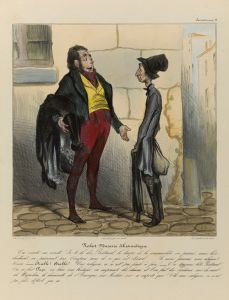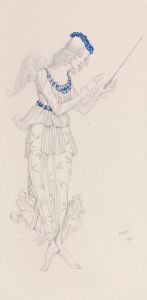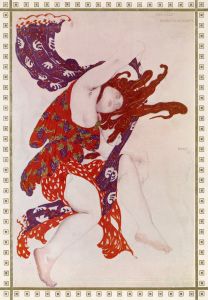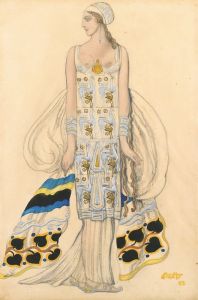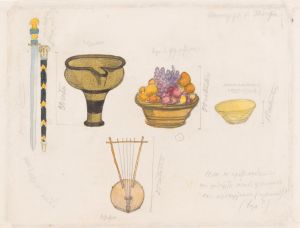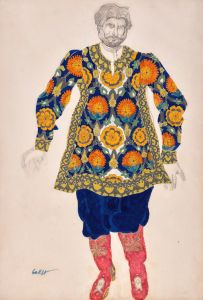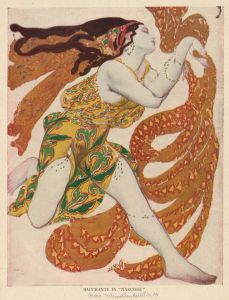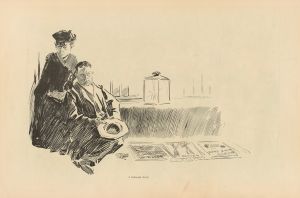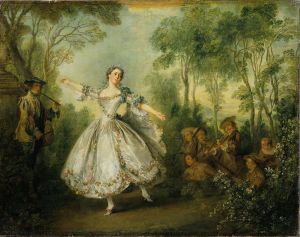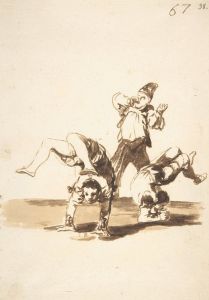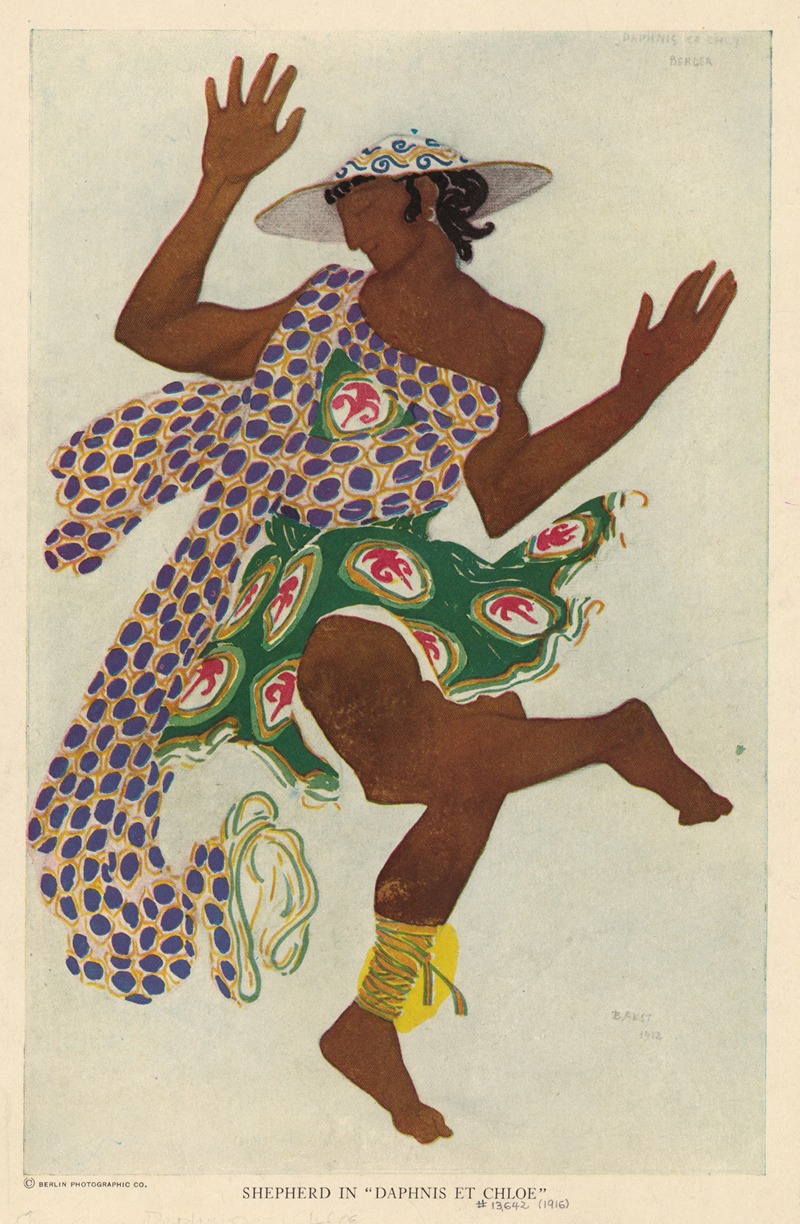
Shepherd in ‘Daphnis et Chloe’
A hand-painted replica of Léon Bakst’s masterpiece Shepherd in ‘Daphnis et Chloe’, meticulously crafted by professional artists to capture the true essence of the original. Each piece is created with museum-quality canvas and rare mineral pigments, carefully painted by experienced artists with delicate brushstrokes and rich, layered colors to perfectly recreate the texture of the original artwork. Unlike machine-printed reproductions, this hand-painted version brings the painting to life, infused with the artist’s emotions and skill in every stroke. Whether for personal collection or home decoration, it instantly elevates the artistic atmosphere of any space.
Léon Bakst's painting Shepherd in ‘Daphnis et Chloe’ is a work created as part of his contributions to the ballet Daphnis et Chloé, a production by the Ballets Russes. The ballet, choreographed by Michel Fokine with music composed by Maurice Ravel, premiered in Paris in 1912. Bakst, a Russian painter and stage designer, was renowned for his vibrant and imaginative designs for the Ballets Russes, and his work for Daphnis et Chloé is considered one of his significant achievements.
The painting depicts a shepherd, a character from the ballet, which is based on the ancient Greek pastoral romance Daphnis and Chloé by Longus. The story revolves around the love between the two titular characters, set against a bucolic backdrop of shepherds, nymphs, and rustic life. Bakst's visual interpretation of the ballet reflects his signature style, characterized by bold colors, intricate patterns, and a blend of classical and exotic influences.
In Shepherd in ‘Daphnis et Chloe’, Bakst captures the essence of the pastoral and mythological themes of the ballet. The shepherd is portrayed in a costume designed by Bakst, which integrates elements of ancient Greek attire with a modern, theatrical flair. The use of rich, saturated colors and dynamic patterns in the painting exemplifies Bakst's ability to merge historical references with his own artistic innovation. His designs for the ballet were instrumental in creating the visual identity of the production, enhancing the narrative and emotional impact of the performance.
Bakst's work for the Ballets Russes, including Daphnis et Chloé, played a significant role in shaping early 20th-century stage design and costume art. His designs were celebrated for their originality and their ability to transport audiences into the fantastical worlds of the ballets. The collaboration between Bakst, Ravel, and Fokine in Daphnis et Chloé is often regarded as a landmark in the history of modern ballet, combining music, choreography, and visual art into a cohesive and groundbreaking production.
While specific details about the painting Shepherd in ‘Daphnis et Chloe’ are limited, it is recognized as part of Bakst's broader body of work for the Ballets Russes. His contributions to the arts continue to be studied and admired for their innovation and influence on both theater and visual art.





